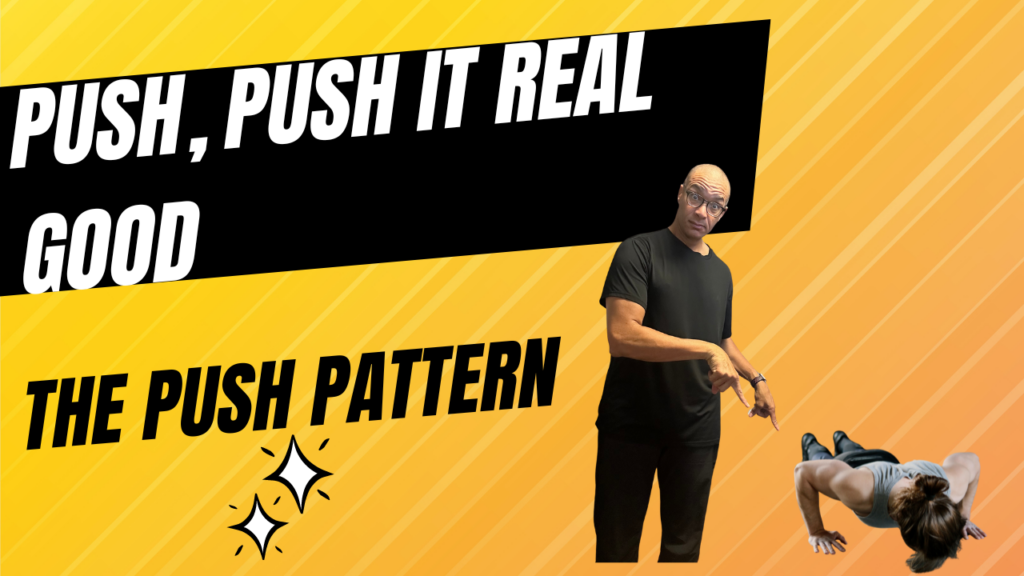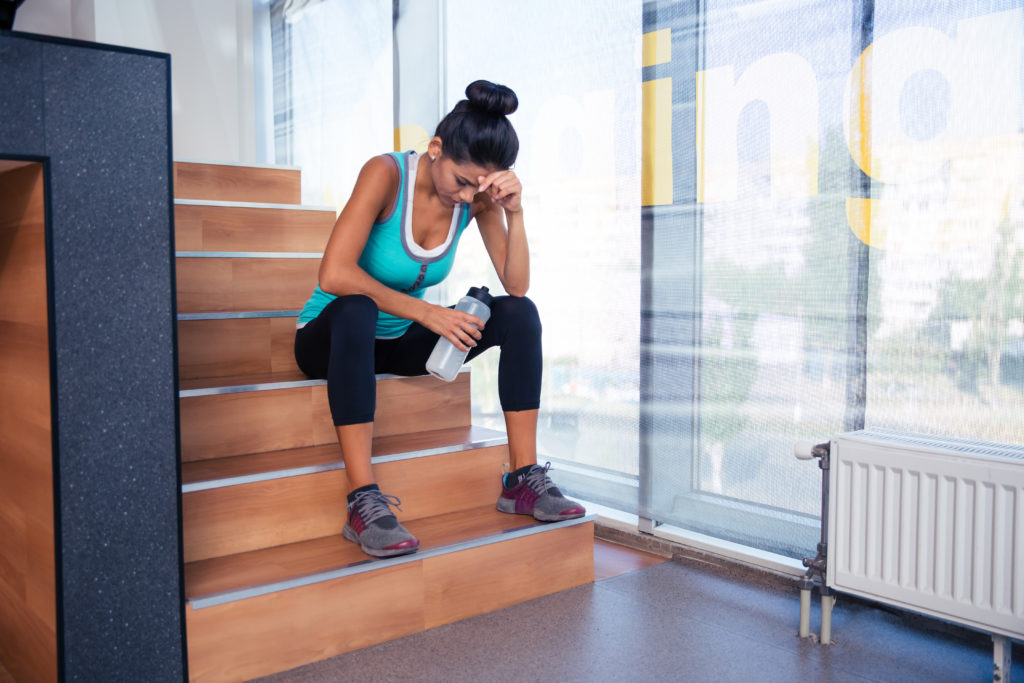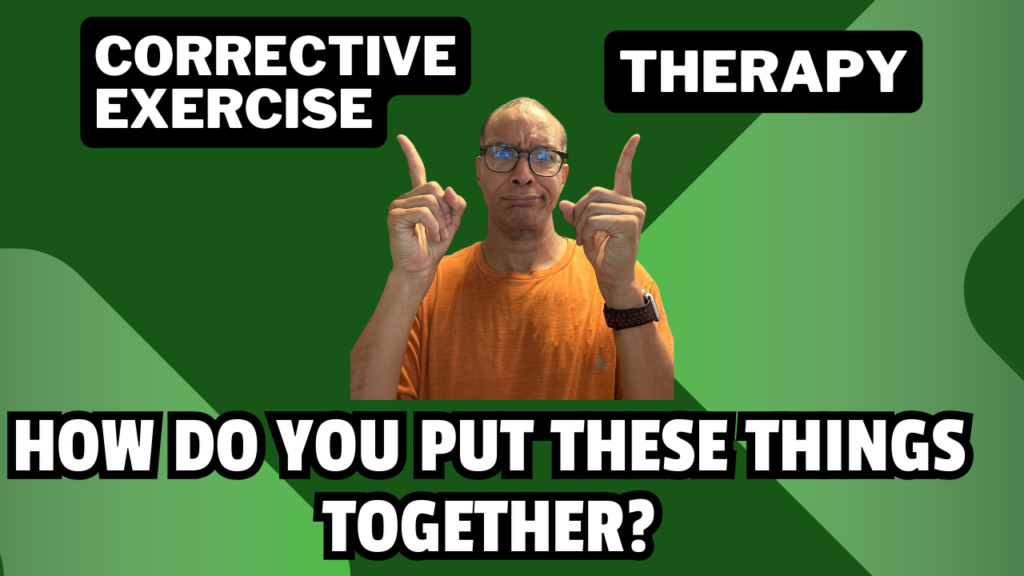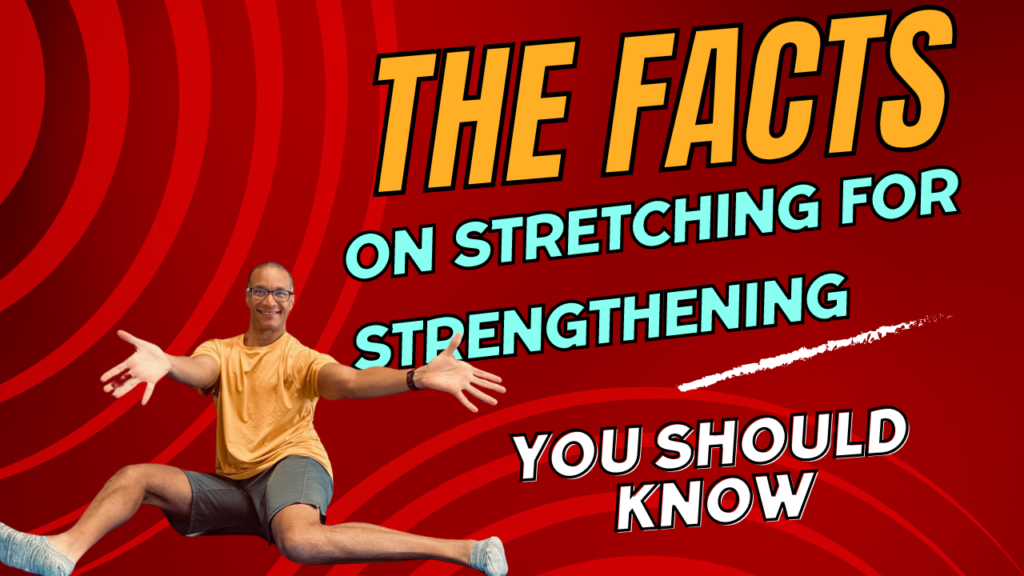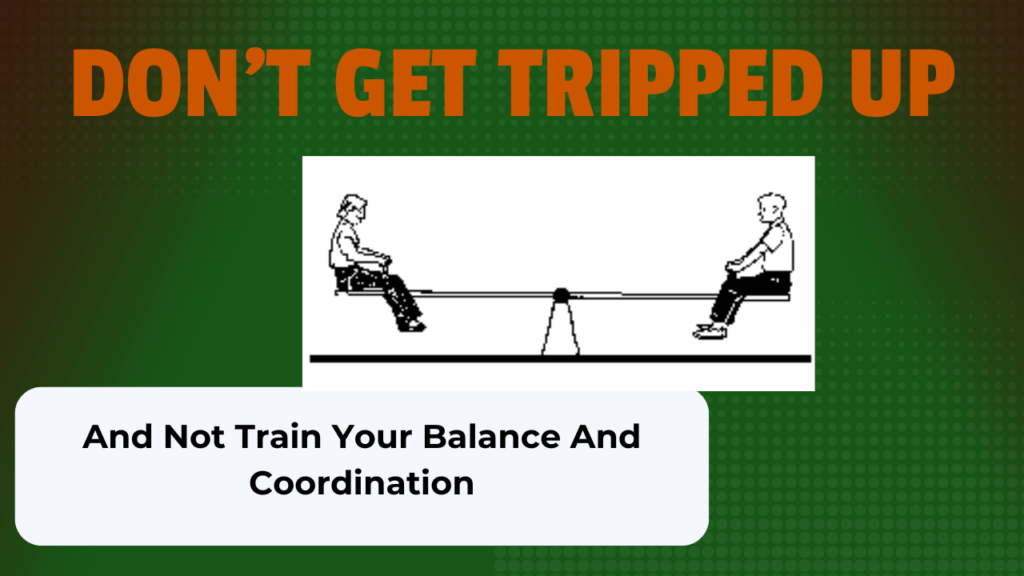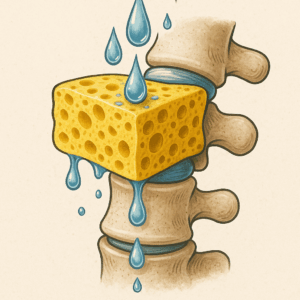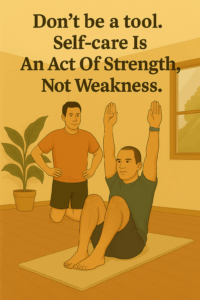Ever wondered how your body’s connective tissue might be playing a crucial role in your overall health? In today’s video, we dive deep into the fascinating world of fascia and its connection to your immune system! 🦠✨
Click on the image to watch the full video
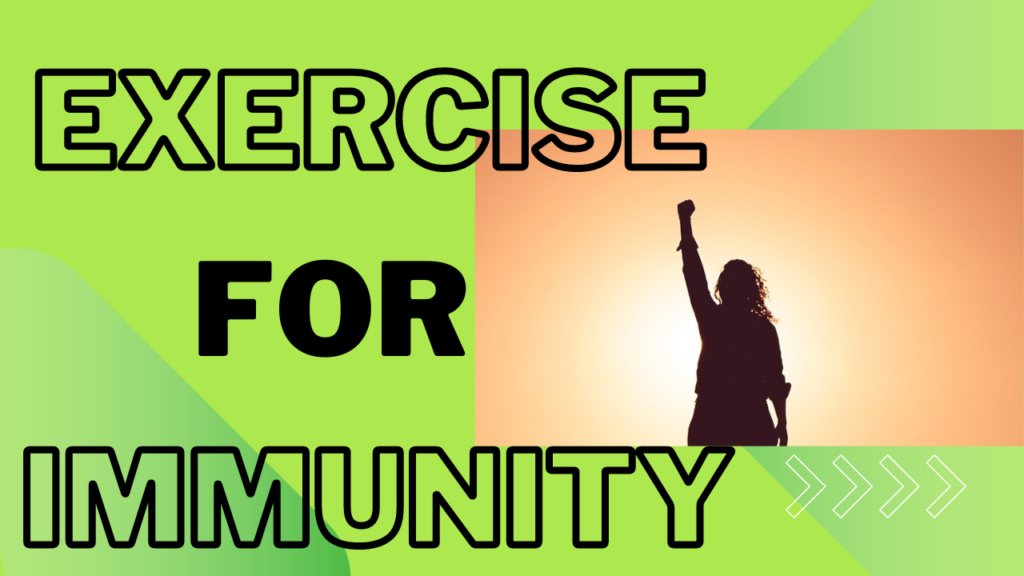
Exercise has the opportunity to make our lives better. We can correct and prevent injuries, we can improve our posture, we can become stronger, more mobile, increase endurance, speed, power, et cetera, et cetera, et cetera. And we can also use it to be healthier. But it takes a specific program to do. So if you’re performing just random acts of movement, as I call it, which is for a walk here, you do a class there, you do something, you go to a therapist over there like you’re doing stuff, but it’s random, right? There’s no kind of rhyme or reason. It’s almost knee-jerk reaction-type stuff. And you won’t get there. And if you continue doing that, in fact, it may make your body worse. Because if you’re not specifically doing something for your body, well, then it’s being neglected. If it’s being neglected, eventually, it’s going to go downhill.
So I want you to stay tuned today when we talk more about being specific with your program to improve your health and immunity. Greetings. I’m Ekemba Sooh, and I own SolCore Fitness. I’ve been in the health and fitness field for like 30 years. I’m a Soma therapist and Soma trainer, which means I’m an osteopathic manual therapist and I’m an osteopathic trainer. And combine these two to help my clients live their best life. So we all know that exercise can help increase not only strength, endurance and speed and power and all that stuff, but it helps increase our health. We can become healthier by working out. This is not new information. There’s tons of studies on it, but these improvements generally are general, right? General meaning there’s a limit to how much you can improve ’em, right? So if I just go for a walk and take a class, I’ll improve my immunity, right?
But there’s going to be a limit to how much I can do that. If I have a goal to really increase my immunity, to make an active actively better, I have to have a program just like I have to have a program to get stronger. I have to have a program to get more endurance. I have to have a program to gain speed, for example. But too often the protocols we’re given are general, right? So what do we do if we want to increase immunity more than generally? Well stay tuned. I’ll talk more about that. The body responds best if you give it specific actions to achieve a goal. Like any goal you want to achieve, you want to take that specific path to get that goal. So if I had a goal to get through the forest and there’s a path they got me through the forest, I want to walk down that path.
I don’t want to just walk into the woods and just randomly move around and hope I get there. It’s the same thing, right? You want to do specific actions and the body’s built a certain way, and all these tendons, ligaments, muscles, bones, organs, they all have a job. So if I can use exercise and treatments to keep myself in place, so they do their job, I function well. I function well by not only moving well and being strong and mobile and good posture. I function well by thinking better. My heart pumps better, I digest better. And oh, by the way, I have a better immune response. So I have to have a goal to improve my immune response to achieve the goal. Then I have to have specific actions to do. Now, some parts you want to be aware for immune response are one, obviously the lymph system, right?
The lymph system carries lymph, which helps fight immunity and your body, there’s specific structures in your body that help with that. You have your clavicles, you have a big ganglions here, especially on the right side. You have your ci, ae, Kylie, I dunno how to say it, ci achille right here. You have your cloquet ganglion right here, and then you have a bunch of limb through your body. Your fascia houses, a lot of this a immune response. And so you also want to take care of your fascia by taking your fascia. I don’t mean foam rolling or some sort of aggressive technique, because that will actually degrade your immune immune response. As an example, if you’ve got a bunch of immunity immune lymphs on your inner thigh a lot, if you take a foam roller and you foam roller your inner thigh like a rolling pin, you’re crushing that immune response.
I actually told that to my teacher one time and he looked at me like I was crazy. I said, I’m totally being serious. And in true fashion, he goes, stupid than that is hard to find because you’re sacrificing your immune response. I don’t know what you’re, you’re trying to roll something out, but it’s not going to work anyway. But now you’re also sacrificing your immune response. What are you doing to help with your immunity? Are you actually using exercise along with the healthy life to increase your immunity? Lemme know in the comments. So helping with your immunity obviously comes down to also how you take care of yourself. So outside of exercise, the basic stuff you need, drink enough of water, half your body weight, an ounce of water. It’s kind the standard. What you want to work towards. You want to eat healthy, plenty. Fruits and vegetables, good meats.
You want to do more pasture raised, organic. You want to eat as natural as possible for you. So however you mix those things, that’s definitely empty to you. It’s different for everybody. But once you have that down, it comes down to the structure. Your body. You may think, oh, I take these supplements to have an immunity, that’s fine. But a couple of things come into play. What supplements do you actually need? That comes down to how’s your microbiome? How well does your GI tract process the food? If I have a bad body because of bad exercising or lack of exercising, then maybe when I eat that food, that GI tract doesn’t work the way it should. So it goes down and it should be absorbing these nutrients and breaking down food properly. But because it’s all twisted and out of place, it can’t secrete the stuff it needs to, can’t absorb what it needs to, which means those supplements you’re eating are very expensive pea.
Now, it also comes down to your food too. So you can eat all those super healthy foods. But again, if your body can’t process it, it can’t process it. This is why exercise is so important to help increase your immunity. We start with structure. If the structure of my body is good, I function well. If my functions off, that means I can’t digest and produce a good immune response like I want. I’ll give you an example. So a big thing with people is forward head posture. Let’s say desk posture. We call it forward head posture, right? Your head’s forward, your back’s rounded, your shoulders are protracted. So you kind of look like that, right? So I would say it’s bad for your structure of your body. You can’t move well, you don’t feel strong, you don’t feel mobile. But like I said, you have a big ganglion.
It’s right here at your clavicles. Well, if my shows are protracted, which means this, and my head’s forward, I get a lot of tension through this area. If I have tension to this area, that means this space that these ganglions should be in goes from this to that. So you’re not asking something to do its job with less space and less mobility than it’s used to, which means it can’t do its job, it can’t respond. So you have to go through your body and say, okay, how’s my posture? And you need to correct wherever posture deviations you have in your body. So relative to immunity, your shoulders can’t be protracted. They have to be back and retracted with good posture, heavy between shoulders. For your cys, Achille, it’s about T 12. I can’t have weak abs or compressed spine in this area because it won’t function.
I can’t have tight and out of place hips because my cloquet ganglion can’t function well. So you want to make sure the structure body is there so that they function. The structure body also helps with the flow of the immune response. And immune response is inflammation. And inflammation shouldn’t be a bad word. It’s the first line of defense for all pathogens. So for all, any type of cold or flu or covid, but also injuries, the first line of response is inflammation. So I want to keep that flow going. I want to keep that flow going by keeping my fascia healthy. If I keep my fascia healthy by again being hydrated, reducing overstress and taking care of it via exercises and treatments, keeping the instruction in mind is going to allow that flow to go. So I want to speak a little bit about the flow.
Think about the flow is like a little river that goes through your body. You got a bunch of rivers that go through your body. They want to keep moving. They help with immune response. They bring nutrition, they keep you healthy. If those rivers turn into ponds, then those ponds turn into festering disgusting ponds. That is the opposite of healthy. That becomes sick, a sick river, a sick pond. So by keeping structure in place and exercising with your fascia mind, you keep those rivers open. So to excess your fascia, you have to understand the fascial lines. For example, your fascia connects your whole body, right? Everything from in utero to now. It’s one fascia that is split in 2000 different directions. But you have different chains of the fascia. So like a spider web that goes out. So if I want to exercise with a fascia mind, I need to know these change.
So if I want to work my hip muscle, right, I pick those three fibers of my hip muscle. I want to know that that fascia line goes down my leg via my practice. Ieo tibial band, namely it band that goes down into my fascia, curious of my foot into my foot, plantar fascia that goes up into my thoraco lumbar ab fascia that goes up into my fascia to connect to my arm, out to my hand, and up to my head. So there’s a chain, right? So these muscles don’t work in isolation. They work in chains or gains, right? It’s a gain. They all function together to perform an action. So if I strengthen my hip muscle and I can keep tension along that chain I just talked about, now I exercise the muscle locally, but holistically, I work with a chain and namely the fascia that keeps the fascia healthy because when I stimulate tissue, I keep it alive because fascia is not inert.
It’s not just the white stuff you remove when you’re butchering, right? It has a bunch of jobs. So if I stimulate this fascial tissue, I keep it healthy. And one of the actions, the jobs of fascia is defense and protection. Now, I increase how much my fascia can defend and protect me from whatever. Now, I know you’d love for me to give you some sort of formula to follow, to increase humidity or recommend some sort of supplement that’s going to correct all your woes, but that’s not what I do here. I want to give you the information to it so you can enlighten yourself a little bit more as to what it takes to do what is needed for your body. And so I don’t want to do that, probably have a lot more subscribers if I did, but don’t care. I want the people who are really interested in that to really get the good results, which means you need be specific with your program for whatever you want.
So I encourage you to look around this site more. My YouTube channel, I talk a lot about a lot of different topics, all with the idea of holistic without being too formulaic. So you can get more information if you want to know more. Then in the description below, I got a free little ebook handout. All you got to do is click on the link, put your information in, you get instant access, and you get a bunch of emails that are going to help with that. Or if you want to talk to me personally, click on that link down below for a calendar schedule. Find your time, what book of time? We’ll talk about what you’re going through now, your sticking points, what it means to you to get your goals happen. And if I see a good fit, I’ll recommend my services, but it’s not an obligation. I want you to have good information first and foremost. So I hope this is helpful. Put any questions you have down in comments and I’ll see you next time.
it’s not just working out, it’s building a foundation for a better life.
Find out more @
